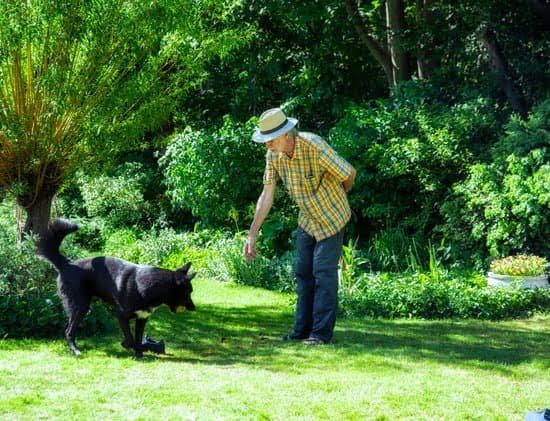What kind of dog training treats should I use? This is a common question among dog owners looking to train their furry companions effectively. Dog training treats play a crucial role in rewarding and reinforcing desired behaviors, making them an essential tool for successful training sessions.
In this article, we will explore the factors to consider when choosing training treats, different types of treats available, and tips for transitioning from treats to verbal rewards. By understanding the importance of dog training treats and making informed decisions, you can enhance your dog’s learning experience and strengthen your bond.
When selecting dog training treats, there are several factors to keep in mind. Firstly, considering the nutritional value of the treats is essential for supporting your dog’s overall health. Exploring the ingredients and understanding their nutritional benefits will ensure you provide your four-legged friend with a balanced diet during training.
Additionally, the size and texture of the treats also matter. Treats should be small enough to be quickly consumed during training sessions while having a texture that entices your dog without causing any difficulties.
Moreover, allergies and sensitivities are significant considerations when choosing training treats. It is essential to select treats that are suitable for dogs with specific dietary restrictions or sensitivities to prevent any adverse reactions or discomfort during training. Lastly, managing your dog’s calorie intake is crucial based on their size, breed, and activity level. Controlling caloric content prevents overfeeding and helps maintain an optimal weight for your furry companion.
In the next sections of this article, we will delve deeper into each factor discussed above as well as explore different types of dog training treats available in stores or that can be made at home using natural ingredients. We will also discuss how understanding your dog’s preferences and motivation can help you choose the most effective treats for successful training sessions.
Let us empower you with all the necessary knowledge about choosing appropriate training treasures to set you up for a positive journey in enhancing your canine companion’s skills and behavior.
Factors to Consider When Choosing Dog Training Treats
When it comes to training your furry friend, choosing the right treats is crucial. The right treats can make a significant difference in the effectiveness of your dog’s training sessions. Here are some important factors to consider when selecting dog training treats:
Nutritional Value
The ingredients and nutritional benefits of training treats play a vital role in supporting your dog’s overall health. Look for treats that are made with high-quality, natural ingredients and are free from artificial additives or fillers. It’s essential to choose treats that provide nutritional value rather than empty calories.
Consider treats with ingredients like lean meats, fruits, and vegetables. These can provide essential proteins, vitamins, and minerals that support your dog’s well-being. Additionally, look for treats that have added benefits such as promoting dental health or joint support.
Size and Texture
The size and texture of the training treat you choose are also important factors. Treats should be small enough so that they can be consumed quickly without interrupting the flow of training. They should also have a soft texture for easy chewing and digestion.
Avoid treats that are too large or hard, as these may take longer for your dog to consume or may pose a choking hazard. Small, bite-sized treats are typically ideal for training purposes as they can be given frequently without causing overfeeding or weight gain.
Allergies and Sensitivities
It’s crucial to consider any allergies or dietary sensitivities your dog may have when selecting training treats. Some dogs may have specific allergies or food intolerances that need to be taken into account. If your dog has any known allergies or sensitivities, opt for hypoallergenic or limited ingredient treats.
Reading labels and understanding what ingredients are present in the treat is important to prevent adverse reactions in your dog. If you’re unsure about which treats are suitable for your dog, consult with your veterinarian for guidance.
Caloric Content
Controlling your dog’s calorie intake is essential for their health and weight management. The caloric content of training treats should be appropriate for your dog’s size, breed, and activity level. High-calorie treats should be reserved for more intense training sessions or used sparingly to prevent excessive weight gain.
Consider low-calorie options or treats that can be easily broken into smaller pieces to reduce overall caloric intake. This way, you can reward your dog frequently during training without worrying about adding too many extra calories to their diet.
By considering the nutritional value, size and texture, allergies and sensitivities, and caloric content of dog training treats, you can ensure that you are providing the best options for effective and healthy training sessions with your beloved pet.
Types of Dog Training Treats
When it comes to dog training treats, there are several options available to choose from. Understanding the different types of treats and their benefits can help you make an informed decision for your furry friend.
1. Store-Bought Treats:
Store-bought treats are a popular choice for many dog owners due to their convenience and availability. These treats come in various flavors, forms (such as biscuits or jerky), and ingredients. Some store-bought treats are specifically formulated with added vitamins and minerals to support your dog’s overall health. However, it is essential to read the ingredient list carefully to ensure that they do not contain any harmful additives or fillers.
2. Homemade Treats:
Homemade treats offer a great alternative for dog owners who want complete control over the ingredients their dogs consume. By making your own treats, you can use natural and easily available ingredients, avoiding any potential allergens or additives that may be present in commercial treats.
There are plenty of recipes and guidelines available online for preparing healthy and delicious homemade treats. Just be sure to avoid using ingredients that may be toxic to dogs, such as onions, garlic, grapes, or chocolate.
3. Freeze-Dried Treats:
Freeze-dried treats have gained popularity among dog trainers due to their enhanced flavor and long shelf life. These treats undergo a special freeze-drying process that helps retain the nutrients while removing moisture from the treat. The result is a lightweight and highly palatable treat that is easy to carry during training sessions or outdoor activities. Additionally, freeze-dried treats often have limited ingredients, making them suitable for dogs with allergies or dietary sensitivities.
4. Natural Chews:
Natural chews like bully sticks or raw bones can also serve as alternatives to traditional training treats. These chews offer mental stimulation while satisfying your dog’s urge to chew on something tasty. Natural chews are long-lasting and can keep your dog busy for extended periods. However, it is crucial to monitor your dog while they chew to ensure they do not break off or swallow any large pieces that could pose a choking hazard.
When selecting dog training treats, it is essential to consider factors such as your dog’s taste preferences, nutritional needs, and any allergies or sensitivities they may have. It’s always a good idea to consult with your veterinarian before introducing any new treats into your dog’s diet.
Remember that treats should be used in moderation and as a supplement to a balanced diet. With the right treats, you can make training sessions enjoyable and rewarding for both you and your beloved canine companion.
Understanding Your Dog’s Preferences and Motivation
When it comes to training your dog, understanding their preferences and motivations is key to choosing the right treats. Just like humans, dogs have their own unique taste preferences that can influence their level of motivation during training sessions. By taking these factors into consideration, you can select treats that are not only enticing but also rewarding for your furry friend.
One important aspect to consider is your dog’s individual taste preferences. Some dogs may prefer treats with a strong meaty or fishy flavor, while others may have a sweet tooth.
Experimenting with different flavors can help you determine what really gets your dog excited and eager to work for their reward. Whether it’s crispy bacon bites or savory cheese treats, finding the flavor that brings out the best in your dog can make a big difference in training success.
In addition to taste preferences, certain treats are considered high-value rewards for dogs. These treats are especially enticing and motivating, which can be invaluable when working on more challenging commands or behaviors. High-value treats could include small pieces of cooked chicken, freeze-dried liver, or even specially formulated training treats available from pet stores. Incorporating these high-value rewards into your training sessions can help keep your dog focused and enthusiastic about learning.
Variety is another important factor to consider when choosing training treats for your dog. Dogs, just like humans, can get bored with the same thing over and over again. By using a variety of treats during training sessions, you can keep things interesting and maintain your dog’s engagement.
This could mean rotating between different flavors or textures throughout the week or even within a single training session. Using a mix of crunchy biscuits, soft chews, or freeze-dried options can provide an enjoyable sensory experience for your pup.
By understanding your dog’s preferences and motivations when it comes to treats, you can enhance the effectiveness of your training sessions. Remember to experiment with different flavors, incorporate high-value treats, and provide variety to keep your dog engaged and motivated. Building a strong positive association with training using the right treats will ensure that both you and your furry companion have a successful and enjoyable training experience.
Training Treat Dos and Don’ts
When it comes to using treats for dog training, there are certain dos and don’ts that can greatly impact the effectiveness of your training sessions. By following these guidelines, you can ensure that you’re using treats appropriately and maximizing their potential as a reward and motivation tool.
Dos:
- Timing: Proper timing is crucial when using treats during training. Make sure to deliver the treat immediately after your dog performs the desired behavior. This will help reinforce the connection between the action and the reward.
- Frequency: Use treats consistently during training sessions to reinforce positive behaviors. Treats should be given frequently in the beginning stages of training, gradually reducing their usage as your dog becomes more proficient in obeying commands.
- Reinforcement Techniques: When using treats as rewards, it’s important to pair them with praise or other forms of positive reinforcement, such as petting or affectionate words. This reinforces the idea that performing the desired behavior leads to a positive outcome.
Don’ts:
- Over-Reliance on Treats: While treats are a valuable tool for training, it’s important not to rely solely on them. Over time, you should be able to phase out treats and transition towards verbal praise or other non-food rewards as your dog becomes more responsive.
- Improper Treat Distribution: Be mindful of how you distribute treats during training sessions. Avoid throwing or tossing treats at your dog, as this may encourage jumping or have unintended consequences. Instead, offer treats gently from your hand to maintain control over the situation.
- Using Treats as Bribes: It’s essential not to use treats as bribes during training. Instead of holding a treat in front of your dog’s face to lure them into performing a behavior, use it as a reward after they’ve completed the desired action without any prompting.
By following these dos and avoiding these don’ts, you can establish a positive and effective training routine with treats. Remember, the goal is to gradually reduce the reliance on treats and transition towards other forms of reinforcement, such as verbal rewards or affectionate praise. With consistency and patience, your dog will learn to respond to your commands even without treats.
Considerations for Specific Training Goals or Issues
When it comes to dog training, different goals and issues may require specific considerations when choosing the right training treats. Whether you are focusing on basic obedience training, behavior modification, or specialized training programs, selecting the appropriate treats can greatly enhance your training efforts.
For basic obedience training commands such as sit, stay, or come when called, it is important to choose treats that are highly motivating and enticing for your dog. Treats with strong flavors or aromas can be particularly effective in capturing your dog’s attention and encouraging them to perform desired behaviors. Additionally, smaller-sized treats can be more convenient during repetitive training sessions and prevent excessive calorie intake.
When addressing behavior modification issues such as separation anxiety or leash aggression, it is crucial to select treats with calming properties. Look for treats that contain ingredients known to promote relaxation, such as chamomile or lavender. These natural ingredients can help create a positive association with situations that trigger undesirable behaviors.
In specialized training programs like search and rescue, agility, or therapy dog training, treats need to be high-value rewards that provide significant motivation for your dog. Training sessions in these advanced programs require a higher level of focus and concentration from your furry friend. Therefore, opt for treats that are considered “jackpot” rewards – something that your dog absolutely loves but only receives during these special sessions.
Considering the specific needs and goals of your dog’s training will ensure that you choose the most appropriate treats to achieve the desired results. Whatever the objective may be, always remember to reinforce positive behaviors consistently with rewards that are enjoyable for your canine companion.
| Training Goal or Issue | Recommended Treats |
|---|---|
| Basic Obedience Training | Treats with strong flavors or aromas; smaller-sized treats |
| Behavior Modification | Treats with calming properties; ingredients like chamomile or lavender |
| Specialized Training Programs | “Jackpot” rewards; treats that are highly motivating and enjoyed by the dog |
Age and Life Stage Considerations
When it comes to choosing dog training treats, it is essential to consider your dog’s age and life stage. Different age groups have specific nutritional needs and varying abilities to consume treats. Understanding these considerations can help you select the most appropriate training treats for your furry companion.
Puppy Training Treats
During puppyhood, positive reinforcement plays a crucial role in shaping their behavior and building trust. When choosing treats for puppies, opt for soft and small treats that are easily chewable. These treats should be gentle on their developing teeth and gums. Additionally, look for treats that are specifically designed for puppies, as they often have added nutrients to support their growth and development.
Adult Dog Training Treats
As your dog transitions into adulthood, their nutritional needs may change. Consider factors such as size, breed, and energy requirements when selecting training treats for adult dogs. It is important to choose treats that align with their dietary needs while also being enticing enough to motivate them during training sessions. Treats that are bite-sized or easily breakable can be beneficial in ensuring quick consumption without interrupting the flow of training.
Senior Dog Training Treats
Senior dogs often have different dental conditions or health issues that may affect their ability to chew or digest certain types of treats. For senior dogs with dental problems or reduced jaw strength, softer treats are easier to chew and safer for their oral health. Additionally, focus on selecting training treats that provide joint support or address specific senior health concerns like digestive support or cognitive function.
By considering the age and life stage of your dog, you can choose training treats that meet their unique needs while providing effective rewards during training sessions.
Tips for Transitioning From Treats to Verbal Rewards
Transitioning from using treats as rewards to verbal rewards is an important aspect of dog training. While treats can be highly effective in motivating and reinforcing desired behaviors, it is essential to eventually phase them out and rely more on verbal praise and non-food rewards. Here are some helpful tips for successfully transitioning from treats to verbal rewards:
- Gradual Reduction: To transition away from using treats, you should gradually reduce their frequency and eventually replace them with verbal rewards. Start by decreasing the number of treats given during training sessions while increasing the use of verbal praise and petting. Over time, your dog will begin to associate the verbal rewards with positive reinforcement.
- Verbal Rewards Techniques: Incorporate alternative reward systems that focus on positive reinforcement in addition to verbal praise. Clicker training is one effective technique where a clicker sound is used as a marker for desired behaviors, followed by immediate verbal praise or a treat. This helps your dog understand that the clicker sound signifies a reward even without the presence of food.
- Consistency and Timing: Consistency is key when transitioning from treats to verbal rewards. Ensure that your timing is precise, delivering the verbal reward immediately after your dog performs the desired behavior correctly. Be consistent in your tone and choice of words, using a happy and enthusiastic voice to reinforce positive behaviors.
- Non-Food Rewards: Verbal rewards can be accompanied by other forms of non-food rewards such as playtime, access to favorite toys, or brief affectionate interactions like belly rubs or head scratches. These rewards should cater to your dog’s preferences and provide additional motivation for them to continue exhibiting good behavior.
- Patience and Persistence: The process of transitioning from treats to verbal rewards requires patience and persistence. Dogs learn at different paces, so it’s important not to rush or become discouraged if progress is slow initially. Stay committed to consistently reinforcing desired behaviors with verbal praise until your dog fully understands and responds to the verbal rewards.
By gradually reducing treat usage and emphasizing verbal rewards, you can strengthen your dog’s understanding of verbal commands and reinforce positive behaviors without always relying on treats. Remember that each dog is unique, so it may take some trial and error to find the most effective techniques for transitioning from treats to verbal rewards.
Conclusion
In conclusion, choosing the right dog training treats is essential for effective training and ensuring your canine companion’s overall health and well-being. By considering factors such as nutritional value, size and texture, allergies and sensitivities, and caloric content, you can make informed decisions that support your dog’s specific needs. Whether you opt for store-bought treats, homemade options, freeze-dried treats, or natural chews, understanding your dog’s preferences and motivation is key to successful training sessions.
Using a variety of treats not only helps maintain your dog’s interest and engagement but also allows for different tastes and textures that cater to their individual preferences. It is important to use treats correctly during training by following dos like proper timing, frequency, and reinforcement techniques. Additionally, it is crucial to be aware of common mistakes to avoid when using treats, such as over-reliance or using them as bribes rather than rewards.
Considerations for specific training goals or issues should also be taken into account when selecting training treats. Whether you are working on basic obedience commands or behavior modification, there are treats available that can aid in achieving these goals effectively. Furthermore, age and life stage considerations play a vital role in choosing appropriate training treats.
Soft and small treats are recommended for puppy training, while adult dogs may require treats that meet their size and energy requirements. For senior dogs with dental or health issues, softer treats that are easier to chew should be chosen.
Finally, transitioning from treats to verbal rewards can be a natural progression in training once desired behaviors have been established. Gradually reducing treat usage while incorporating alternative reward systems like clicker training or positive reinforcement can help solidify learned behaviors without solely relying on food incentives.
By empowering dog owners with the knowledge to make informed decisions about their choice of dog training treats, this article aims to enhance the bond between dogs and their humans through effective communication and positive reinforcement. With the right treat selection tailored to your dog’s needs, you can enjoy successful training experiences that ensure their happiness and well-being.
Frequently Asked Questions
What kind of treats are best for training dogs?
When it comes to training dogs, the best kind of treats are ones that are both highly enticing and easy to consume quickly. Soft, bite-sized treats are often favored as they can be easily broken into smaller pieces and quickly consumed by the dog without disrupting the flow of training.
Additionally, treats with a strong aroma or flavor tend to be more effective in capturing a dog’s attention and maintaining their focus during training sessions. Ultimately, the specific type of treat that works best for training may vary depending on the individual preferences and dietary needs of each dog.
What dog treats do vets recommend?
Veterinarians often recommend dog treats that are nutritious, low in calories, and made from high-quality ingredients for optimal health benefits. Treats that are specifically formulated for dental health can be beneficial as they may help reduce tartar build-up or promote good oral hygiene.
Vet-recommended treats also take into consideration any allergies or sensitivities that a dog may have, so treats with limited ingredient lists or hypoallergenic options may be suggested for dogs with specific dietary restrictions. Ultimately, consulting with a veterinarian can provide tailored recommendations based on the specific needs of each individual dog.
What to avoid in dog training treats?
In dog training treats, it is important to avoid certain ingredients or characteristics that could potentially pose health risks or hinder the effectiveness of training sessions. Treats that contain excessive amounts of additives, preservatives, artificial colors/flavors or fillers should generally be avoided as they may not provide any real nutritional value to the dog’s diet and may even cause digestive issues in some cases.
Furthermore, treats that are too large or difficult to chew can slow down training progress as they might require excessive time for consumption which could disrupt the flow and momentum during a training session. It is also advisable to avoid using regular human food as treats since this can lead to mistaken associations between table scraps and rewards for dogs which may encourage begging behaviors at mealtimes.

Welcome to the blog! I am a professional dog trainer and have been working with dogs for many years. In this blog, I will be discussing various topics related to dog training, including tips, tricks, and advice. I hope you find this information helpful and informative. Thanks for reading!





